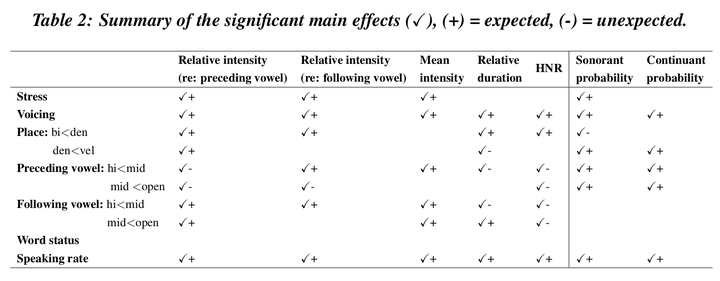
Abstract
A phonologically informed neural network approach, Phonet, was compared to acoustic measurements of intensity, duration and harmonicity in estimating lenition degree of voiced and voiceless stops in a corpus of Argentine Spanish. Recurrent neural networks were trained to recognize phonological features [sonorant] and [continuant]. Their posterior probabilities were computed over the target segments. Relative to most acoustic metrics, posterior probabilities of the two features are more consistent, and in the direction predicted by known factors of lenition: stress, voicing, place of articulation, surrounding vowel height, and speaking rate. The results suggest that Phonet could more reliably quantify lenition gradient than some acoustic metrics.